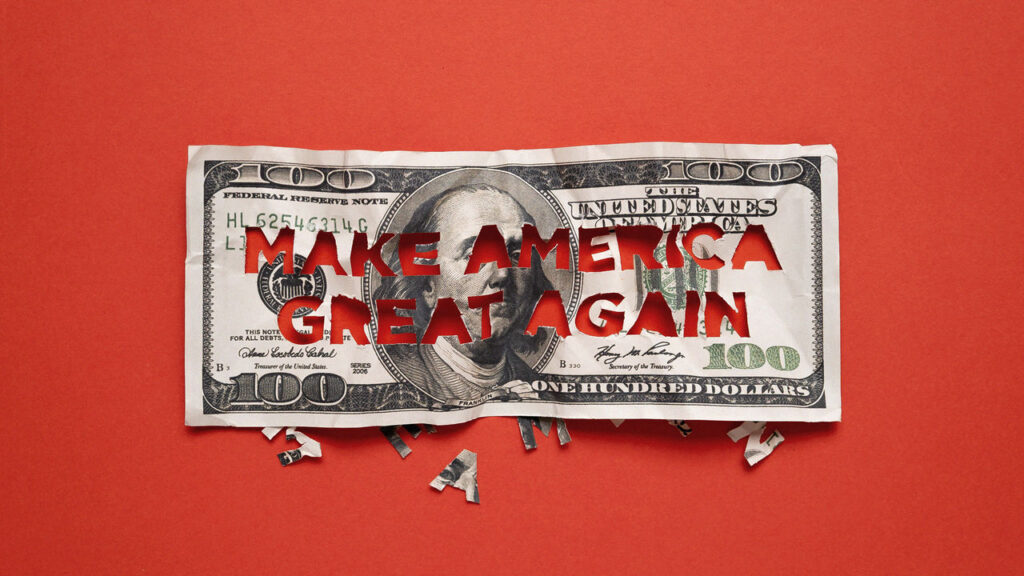As the anticipated date of “Liberation Day” approaches, an event that many are eagerly awaiting, American businesses are facing increasing challenges that impact their operations and overall economic health. “Liberation Day,” a term that may refer to various commemorative events, has taken on a unique significance this year, extending beyond its historical or cultural roots and influencing economic landscapes. This convergence of celebration and economic struggle presents a perplexing dichotomy that is affecting businesses across the nation, compelling them to strategize critically.
The lead-up to “Liberation Day” often spurs an increase in consumer spending, as Americans look to engage in festivities and celebrations that accompany such an occasion. Retail publications typically forecast increased revenue for businesses due to heightened consumer interest in themed products, ornaments, and paraphernalia associated with the day. However, this year, various economic undercurrents create a contrasting narrative. Inflation rates, supply chain disruptions, and shifting consumer behaviors have led to a decrease in disposable income, which in turn affects purchasing power.
Moreover, American manufacturers are grappling with heightened costs associated with raw materials and labor, following a trend that has persisted since the beginning of 2023. Industries such as construction, textiles, and food services have reported difficulty maintaining profitability due to these escalating expenses. High inflation rates have forced many companies to raise product prices, which has deterred consumers from engaging in their previously expected spending patterns. Businesses that typically rely on the influx of sales around “Liberation Day” are now bracing themselves for larger than anticipated drops in revenue.
In a recent statement, Sarah Henderson, CEO of Henderson’s Pet Supplies, lamented the challenges faced by her business. “While we usually see a spike in sales as people prepare for celebrations, this year, our customers are more cautious about spending,” she stated. Her sentiments reflect a broader concern in the retail sector, where executives lament that many consumers have opted for savings over spending as they reevaluate their financial priorities in light of economic uncertainties.
Catering services, party planning businesses, and local vendors traditionally enjoy profitable bursts during festive occasions. However, many have reported cancellations and reduced bookings in advance of “Liberation Day.” Event planner Mark Thompson noted that clients are limiting event budgets or opting for more subdued gatherings, which has salvaged only a fraction of what they would typically earn around this time of year. “We are adapting by offering more affordable packages, but it is disheartening to see the shift in consumer behavior,” he confessed.
In addition to consumer hesitance, broader economic trends are affecting American businesses. The labor shortage persists in many sectors, resulting in delayed orders and diminished service levels. Many companies are struggling to find and retain workers amid the ongoing competition for talent, a challenge that has been exacerbated by changing attitudes towards work-life balance that favor remote work and flexible schedules. Business owners are also attempting to comply with a variety of new regulations that introduce further complexities into operations, all while maintaining their commitment to offering fair wages and benefits.
While the challenges are numerous, there is a prevailing sense of resilience among business owners. Some are choosing to leverage digital marketing strategies to create awareness and predictively target customers’ needs in lead-up to “Liberation Day.” Implementing social media contests, special promotions, or community-oriented events are some of the tactics being employed in hopes of reversing the downward trend.
As “Liberation Day” approaches, the juxtaposition of festivity and fiscal restraint reflects a unique chapter in the evolving narrative of American business. While jubilant celebrations typically accompany such commemorative days, the ongoing economic landscape presents hurdles that require strategic ingenuity and adaptation. Businesses across the United States are showcasing their ability to adapt amidst adversity, hoping that what remains of the festive spirit can inspire consumers to engage and contribute to a more vibrant economic future.









